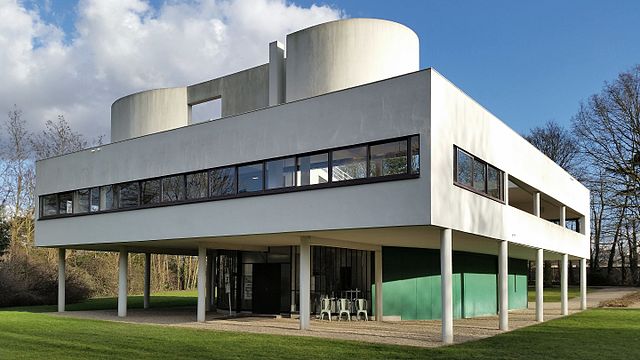

The Villa Savoye
Classified as a historical monument in 1964 (during the lifetime of its creator, which is quite unprecedented), the Villa Savoye in Poissy in the Yvelines is considered one of the masterpieces of contemporary architecture. Built between the wars by Charles-Edouard Jeanneret, known as Le Corbusier, it perfectly illustrates his 5 principles of new architecture: free plan and facade, long windows, pilotis and garden roof.
A founding member of the International Congresses of Modern Architecture launched in 1928, Le Corbusier revolutionized the discipline by imposing reinforced concrete as the basis for all construction, the flexibility of this material allowing for the renewal of forms and spans. Originally a simple weekend house, the Villa Savoye (restored by the State after years of abandonment) is now considered the perfect synthesis of modern architectural vocabulary.
Museum of the Renaissance
In the Val-d'Oise, the pretty town of Ecouen houses the National Renaissance Museum in a majestic 16th century castle. Since 1977, rich collections immerse visitors in the golden centuries of humanism and the arts: tapestries (including the famous work on David and Bathsheba measuring 75 m long), painted enamels from Limoges, weapons, sculptures, stained glass windows, furniture, silverware, paintings ... all artistic fields are highlighted in the 32 museographic rooms of this site belonging to the Ministry of Culture and whose specialization was driven by André Malraux.
With its imposing architecture worthy of the Loire castles, the domain (only 19 km from Paris) is also worth a visit for its park. Its alleys and flowerbeds respect the original aspect of the place and the beautiful view on the surrounding countryside plunge us indeed in the heart of the 16th century.
The Castle of Monte Cristo
Far from the small Italian island where Alexandre Dumas set the plot of his famous novel The Count of Monte Cristo, this beautiful neo-Renaissance residence is located in Port Marly in the Yvelines and was bought in 1844 by the writer at the height of his fame. A bit megalomaniacal, the author of the Three Musketeers organized great parties there (with no less than 600 guests at the housewarming party!) and lived in such style that, ruined, he had to sell it 5 years later.
A real « folie » with its English-style park housing an artificial grotto and its large reception areas, the site was saved from destruction thanks to the historian Alain Decaux in the 1960s. We can thank him for having preserved this living testament of one of the most famous French literary pens that his admirers, coming from all over the world, discover every year with pleasure.
The Jean-Jacques Rousseau Museum
The Social Contract, The New Heloise, Education or Emile: it is in this white building with a tiled roof that the famous French writer and philosopher of the 18th century produced his most famous works.
This place, which today houses the Rousseauist Studies Library, is located in Montmorency (Val d'Oise), far enough away from Paris, "a city of smoke, noise and mud", for one of the thinkers of democracy to make a significant contribution to the « Lumières » century through his often innovative reflections.
His famous pastel portrait by Maurice Quentin de La Tour, manuscripts, a garden and the study of the writer, who was canonized in 1794, can be seen on site.
Valerie from Comme des Français
----
Looking for other little-known sites not to be missed?
- The home of a famous painter and patron
- The Camille Claudel museum in Nogent sur Seine
- A mini Versailles on the Ile de la Cité